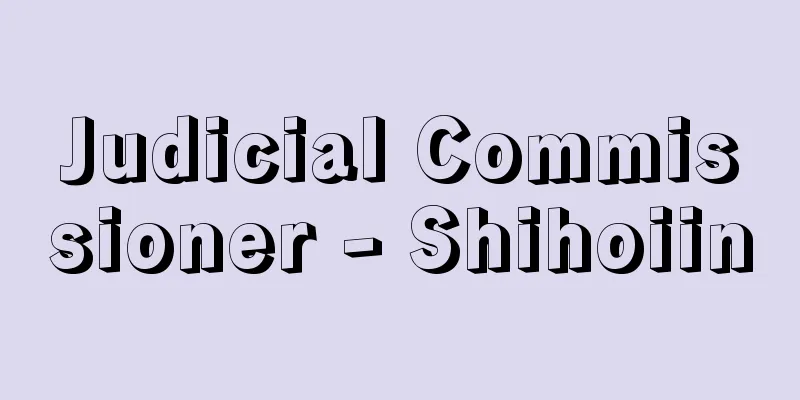Synthetic detergent

|
A general term for detergents that use industrially synthesized surfactants. Unlike soaps, which are fatty acid alkali salts of animal and vegetable fats and oils, synthetic surfactants are the main ingredient, but the term also includes builders (cleaning promoters), enzymes, fragrances, fluorescent whitening agents, etc. that are added to enhance the detergent's effect. Sometimes they also contain bleach, solvents, and disinfectants. More than two-thirds of synthetic detergents produced are used for laundry detergents, but they are also used in the kitchen, home, hair, disinfection, and sterilization, and different ingredients are used for each. Synthetic detergents are classified according to the hydrogen ion concentration (pH) when dissolved in water, such as alkaline or neutral; according to the ionicity of the surfactant in aqueous solution, such as anionic, cationic, amphoteric, and nonionic; according to the strength of cleaning power depending on the application, such as heavy duty detergents and light duty detergents; and according to the shape of the detergent, such as granular (powder), liquid, and tablet. [Noriko Shinozuka and Masazo Nagayama] Manufacturing methodThe most common anionic surfactant for synthetic detergents, LAS (linear alkylbenzene sulfonate), is made by condensing n-paraffin or n-α-olefin with benzene in the presence of a catalyst to produce linear alkylbenzene, which is then sulfonated and neutralized with sodium hydroxide to produce a sodium salt. It is also called dodecylbenzene sulfonate due to the chemical structure of its main component. Sulfonating agents include sulfur trioxide, fuming sulfuric acid, and chlorosulfonic acid, but sulfur trioxide is used in most cases. n-α-olefins, fatty acid methyl esters, and higher alcohols are also converted by sulfur trioxide into α-olefin sulfonic acid (AOS), α-sulfofatty acid methyl esters (SFE), and higher alcohol sulfates (alkyl sulfates, AS), respectively, which are similarly neutralized with sodium hydroxide to produce salts and become anionic surfactants for synthetic detergents. Typical nonionic surfactants are produced by reacting higher alcohols or alkylphenols with ethylene oxide using a catalyst. Alkylphenols act as weak endocrine disrupting substances and their uses are limited, so alkyl polyoxyethylene ethers (AE), which are made from higher alcohols, are the mainstream. The mainstream of household synthetic detergents are granular, and mainly use anionic surfactants. A small amount of nonionic surfactants may be mixed in, but aluminosilicates (the same components as natural zeolite, called zeolite), silicates, carbonates, etc. are added as builders, and the detergents are manufactured through the processes of drying, kneading, crushing, and granulation. In the past, hollow granular detergents made by spray drying were used, but compact detergents with a high bulk density have become mainstream. [Noriko Shinozuka and Masazo Nagayama] historyDetergents are said to have started with the invention of soap during the Mesopotamian civilization around 2500 BC. In the modern era, detergents became widespread with the development of the soda industry in the 19th century, the dawn of the chemical industry, and have a long history of use that continues to this day. However, they have drawbacks such as being insoluble in hard water and becoming acidic in dilute aqueous solutions, making them difficult to rinse after washing. Synthetic detergents are said to have first been used in Germany during World War I, when a shortage of edible oils made it impossible to manufacture soap, and butylnaphthalenesulfonate was used as a substitute. Later, in 1928, the German company Boehme industrialized higher alcohol sulfate (AS) salts, and in 1933, the American company Procter & Gamble marketed the first synthetic detergent for household use, called "Dreft." In Japan, they were marketed as a neutral detergent for wool and silk in 1937 (Showa 12). Alkylbenzene sulfonate was invented in Germany in 1933, and ABS was developed in the United States in 1942 using propylene tetramer, a by-product of synthetic gasoline production. During World War II, there was a shortage of coconut oil, a detergent raw material, in Western countries, and synthetic detergents came into the spotlight. After the war, the United States began mass production of ABS using its abundant oil resources, and ABS detergent became the mainstream household detergent. In the United States, the use of synthetic detergents exceeded that of soap in 1953, and in Japan, synthetic detergents exceeded that of soap in 1963. Alkyl polyoxyethylene ether (AE), a nonionic surfactant, was developed in 1930, and alkyl polyoxyethylene sulfate (AES), which is a sulfate ester salt of AE, was developed as an anionic surfactant in 1938. Secondary alkane sulfonate (SAS), which is also used relatively often, was produced in 1933 by reacting n-paraffin with sulfur dioxide and chlorine or oxygen. The development of the synthesis methods for the aforementioned AOS and SFE was delayed because it was necessary to overcome difficult technical issues such as the handling of sulfur trioxide, and they were only completed after 1967 as progress was made in making detergents more biodegradable (softer). [Noriko Shinozuka and Masazo Nagayama] Types of detergent(1) Heavy-duty detergents for clothing Synthetic detergents are used in large quantities to wash stains from cotton and synthetic underwear, everyday clothes, work clothes, etc. Heavy-duty detergents for such purposes generally have a weakly alkaline aqueous solution to make it easier to remove stains. Therefore, in addition to surfactants, detergents contain builders, redeposition inhibitors, foam control agents, fluorescent brighteners, enzymes, granulation stabilizers, fragrances, and other ingredients. Sometimes bleaching agents are added to clean and bleach at the same time. Anionic and nonionic surfactants are used as surfactants. LAS is stable even in alkaline conditions, can be mixed with many other builders and surfactants, and has good water solubility, so it is widely used. Other surfactants that are used include AOS, SFE, AS, AES, and the nonionic surfactant AE. Builders are added to help the surfactant function and improve cleaning power, and aluminosilicates are added to remove calcium, a hard water component. A small amount of acrylic acid maleic acid copolymer is also used for the same purpose, and it also has a shape stabilizing effect. Silicates and carbonates are also used, which reduce the effects of hard water and keep the pH alkaline to improve cleaning conditions. Traditionally, condensed phosphates were used for the same purpose, but their use has been restricted to prevent eutrophication of rivers, lakes, and bays due to phosphorus, and they are no longer used at all in Japan (see below). Surfactants have also begun to use AOS, SFE, AES, and AE, which have better hard water resistance, instead of some LAS. Carboxymethylcellulose is used as a re-soiling inhibitor, soap as a foam control agent, and small amounts of stilbene derivatives, which have direct dyeing properties for cellulose, are used as fluorescent whitening agents. Proteolytic enzymes and oil-splitting enzymes are used to support the cleaning effect by breaking down dirt components. (2) Light-duty laundry detergents For washing animal fiber products such as wool and silk, and clothing with delicate threads and woven structures, it is preferable to wash them by hand, under mild conditions with a neutral pH, and avoiding the mechanical force of a washing machine. Detergents developed for this purpose mainly contain anionic surfactants such as LAS and AES, and non-ionic surfactants such as AE. They rarely contain builders or fluorescent whitening agents, are suitable for cleaning light stains, and contain added fragrances. (3) Shampoos Shampoos for cleaning hair and scalp must have adequate cleansing and foaming properties, maintain the texture of hair, and be non-irritating to the eyes and skin. For this reason, careful consideration is given to the selection of surfactants. In addition, fragrances are also considered for use as cosmetics. In addition to the anionic surfactant AES and the nonionic surfactant fatty acid diethanolamide, acylamino acid salts (condensation products of amino acids and fatty acids) and amphoteric surfactants that are particularly non-irritating are also used. Some shampoos contain medicinal ingredients such as selenium sulfide, ZPT (zinc 2-pyridinethiol-N-oxide), and piroctone olamine to suppress dandruff. In addition to fragrances and colorants, cationic modified cellulose, lanolin derivatives, and collagen derivatives are used as conditioning agents. A small amount of an organic chelating agent (ethylenediaminetetraacetate) is also used to maintain a transparent liquid. (4) Household Detergents Household detergents include all-purpose detergents that remove dirt through the action of surfactants, and specialized detergents for the bathroom, toilet, glass, furniture, etc. All-purpose detergents contain a few percent of LAS or non-ionic surfactants as surfactants, and are made weakly alkaline by adding builders. Toilet detergents include strong alkaline detergents that contain sodium hypochlorite, and detergents that contain strong acidic hydrochloric acid and have a chemical action as their main effect, so they must be handled with care. (5) Kitchen detergents Detergents used to remove dirt from dishes, cooking utensils, vegetables, etc. contain anionic surfactants such as LAS, AES, and SAS, nonionic surfactants such as AE and fatty acid diethanolamide, and amphoteric surfactants such as N-alkyl betaine. To make them liquid and easy to use as kitchen detergents, ethanol (ethyl alcohol), urea, toluenesulfonate, etc. are added to make them stable, concentrated solutions. Other additives include emulsifiers such as polyvinyl acetate emulsion, agents to prevent rough hands, as well as food additives such as fragrances and colorants. (6) Cationic surfactants Cationic surfactants do not have the typical cleaning power, but they are effective for disinfection. For this reason, they are used in hospitals for the hygiene management of surgeries and patient rooms. They are so named because the ions are the opposite of those of anionic surfactants. (7) Industrial Detergents The main industries that use detergents for commercial purposes are the textile industry, the pulp and paper industry, and the food industry, but there are also detergents formulated to suit each purpose, such as for cleaning metal surfaces and vehicles. Industrial detergents often use non-ionic surfactants that are good at removing mineral oil stains, have low foaming properties, and are resistant to hard water. [Noriko Shinozuka and Masazo Nagayama] Synthetic detergents and environmental issuesSoap was replaced by synthetic detergents, mainly ABS detergents, and the amount used thereafter increased rapidly, resulting in water pollution problems as the detergents foamed in rivers and sewage treatment plants where they were discharged as wastewater. This was due to the poor biodegradability of ABS detergents. As a result, in the UK and Germany, LAS, which is relatively biodegradable, replaced ABS as the mainstream synthetic detergent by around 1965. Detergents that use biodegradable surfactants are called soft detergents, and softening of detergents was progressing in the US at roughly the same time as in Europe. Japan, which was slower to switch from soap to synthetic detergents than Europe and the United States, set a target of 80% or more biodegradability in 1968, and achieved 97.5% by using LAS, AS, and AOS in 1972. The problem of water pollution caused by the poor biodegradability of synthetic detergents was resolved when the main ingredients were softened, but then eutrophication of lakes and inland seas came into focus as an environmental issue, and the phosphates contained in synthetic detergents were identified as one of the causes. Eutrophication occurs when surface water contains large amounts of nutrients for aquatic life, such as phosphorus and nitrogen, which results in increased biological production in lakes and other environments, and is thought to be the cause of red tides and the massive growth of algae, for example. The eutrophication phenomenon was particularly severe in the southern part of Lake Biwa, and in 1979 Shiga Prefecture promulgated the "Shiga Prefecture Lake Biwa Eutrophication Prevention Ordinance," banning the use and sale of synthetic detergents containing phosphorus. It is estimated that around 10-20% of the phosphorus present in the environment comes from synthetic detergents, but in 1980 the Environment Agency (now the Ministry of the Environment) announced the "Comprehensive Measures for Eutrophication Prevention," which prompted Japan to move away from phosphorus-containing synthetic detergents, and detergents using zeolite instead of tripolyphosphate became widespread, resulting in phosphorus-free household synthetic detergents. One of the effects that detergents can have on the body is skin diseases caused by contact. A well-known example is housewife's eczema, a non-inflammatory condition that heals naturally when use is discontinued. Oral acute toxicity of ordinary synthetic detergents is roughly the same as that of soap. The 50% lethal dose is 4-10 grams per kilogram of body weight, which is less toxic than table salt and is practically classified as non-toxic. Among surfactants, cationic surfactants are highly toxic, while nonionic surfactants are the least toxic. When using synthetic detergents, care should be taken not to use more than necessary, and it is advisable to dilute it with water (usually a 0.2% solution), and to wear rubber gloves to protect hands and fingers. Care should also be taken when storing detergents to prevent accidental ingestion. [Noriko Shinozuka and Masazo Nagayama] "Knowledge of Synthetic Detergents" by Ogino Keizo (1974, Saiwai Shobo)" ▽ "The Science of Detergents" by Imaki Takashi, Oki Kosuke, and Toyama Shinichi (1988, Domesu Publishing)" ▽ "The Story of Surfactants" by Kitahara Fumio (1997, Tokyo Kagaku Dojin)" ▽ "Detergents - The Science and Practice" by Fujii Tetsuya (1995, Saiwai Shobo)" ▽ "The World of Surfaces" by Ogino Keizo (1998, Shokabo) [Reference items] | | | | | | | | | | |Detergent| | | | | |Source: Shogakukan Encyclopedia Nipponica About Encyclopedia Nipponica Information | Legend |
|
工業的に化学合成された界面活性剤を用いた洗剤の総称。動植物油脂の脂肪酸アルカリ塩であるせっけんに対し、合成界面活性剤が主要成分であるが、洗剤としての作用を高めるために配合されるビルダー(洗浄促進剤)、酵素、香料、蛍光増白剤などを含めた意味で使われる。また漂白剤や溶剤、殺菌剤が配合されている場合もある。合成洗剤の生産量のうち3分の2以上が衣料用洗剤として用いられるが、そのほかに台所用、住居用、毛髪用、消毒・殺菌用などにも用いられ、それぞれ異なった成分が使用される。合成洗剤の分類法には、アルカリ性、中性など水に溶かしたときの水素イオン濃度(pH)による分類、陰イオン系、陽イオン系、両性イオン系、非イオン系のように界面活性剤の水溶液中でのイオン性による分類、ヘビーデューティー洗剤(重質洗剤)、ライトデューティー洗剤(軽質洗剤)のように用途に応じた洗浄力の強さによる分類、粒(粉末)状、液体、タブレット(錠剤)など洗剤の形状による分類などがある。 [篠塚則子・永山升三] 製法合成洗剤用としてもっとも一般的な陰イオン活性剤LAS(ラス)(linear alkylbenzene sulfonate直鎖アルキルベンゼンスルホン酸塩)は、n-パラフィンまたはn-α-オレフィンを、触媒の存在下、ベンゼンと縮合させて直鎖アルキルベンゼンとし、これをスルホン化後、水酸化ナトリウムで中和してナトリウム塩とする。また、その主成分の化学構造から、ドデシルベンゼンスルホン酸塩ともよばれる。スルホン化剤には三酸化硫黄(いおう)、発煙硫酸、クロロスルホン酸などが用いられるが、ほとんど三酸化硫黄が用いられている。n-α-オレフィンや脂肪酸メチルエステル、高級アルコールなども三酸化硫黄によって、それぞれα-オレフィンスルホン酸(AOS)、α-スルホ脂肪酸メチル(SFE)、高級アルコール硫酸エステル(硫酸アルキル、AS)となり、同様に水酸化ナトリウムで中和して塩として合成洗剤用陰イオン活性剤になる。典型的な非イオン活性剤は、高級アルコールまたはアルキルフェノールに触媒を用いて酸化エチレンを反応させて製造される。アルキルフェノールは、弱いながら内分泌攪乱(かくらん)物質としての作用がありその用途が制限されているので、高級アルコールを原料とするアルキルポリオキシエチレンエーテル(AE)が主流である。 家庭用合成洗剤の主流は、粒状のもので、陰イオン活性剤がおもに用いられる。少量の非イオン活性剤が配合されることもあるが、これらにアルミノケイ酸塩(天然の沸石と同一成分、ゼオライトとよばれる)、ケイ酸塩、炭酸塩などをビルダーとして加え、乾燥、混練、粉砕、造粒の工程を経て製造される。以前は噴霧乾燥法により中空粒状のものが用いられていたが、かさ比重を大きくしたコンパクト洗剤が主流になっている。 [篠塚則子・永山升三] 歴史洗剤は紀元前2500年ごろのメソポタミア文明の時代にせっけんが発明されたのが始まりとされる。近世では化学工業の黎明(れいめい)期である19世紀にソーダ産業の進展とともに普及し、今日まで使用されている長い歴史をもつが、硬水中で不溶化したり、希薄水溶液中で酸性せっけんとなって洗浄後のすすぎが困難になったりするなどの欠点がある。合成洗剤は、第一次世界大戦中ドイツで食用油脂の欠乏からせっけんの製造ができなくなり、代用品としてブチルナフタレンスルホン酸塩を使用したのが最初とされている。その後1928年ドイツのベーメ社が高級アルコール硫酸エステル(AS)塩を工業化し、1933年にはアメリカのプロクター・アンド・ギャンブル社が「ドレフト」という家庭用合成洗剤を初めて市販した。日本では37年(昭和12)羊毛および絹用中性洗剤として市販されている。1933年にドイツで発明されたアルキルベンゼンスルホン酸塩は、42年アメリカで合成ガソリン製造の副成物のプロピレンテトラマーを原料としてABSが開発された。第二次世界大戦中欧米諸国では洗剤原料のやし油が不足して、合成洗剤が脚光を浴びるようになった。戦後アメリカは、その豊富な石油資源を利用してABSの大量生産に着手し、ABS洗剤が家庭用洗剤の主流となった。アメリカでは1953年に合成洗剤の使用量がせっけんを上回り、日本では63年に合成洗剤がせっけんを上回った。非イオン活性剤であるアルキルポリオキシエチレンエーテル(AE)は1930年に開発され、それを硫酸エステル塩とした硫酸アルキルポリオキシエチレン塩(AES)も陰イオン活性剤として38年に開発された。そのほか比較的よく用いられる二級アルカンスルホン酸塩(SAS)はn-パラフィンと二酸化硫黄と塩素または酸素との反応により製造する方法が33年に開発されている。前出のAOSやSFEの合成法は、三酸化硫黄の取扱いなどの困難な技術を克服する必要があったため開発が遅れ、67年以降に洗剤の生分解性(ソフト化)の進展に伴って完成した。 [篠塚則子・永山升三] 洗剤の種類(1)衣料用ヘビーデューティー洗剤 合成洗剤がもっとも大量に使われるのは、木綿、合成繊維などの肌着、日常着、作業服などの汚れを洗濯するためで、このような用途のヘビーデューティー洗剤は一般に水溶液が弱アルカリ性となるようにして汚れを落としやすくしてある。したがって洗剤には界面活性剤のほかに、ビルダー、再汚染防止剤、制泡剤、蛍光増白剤、酵素、粒状化安定剤、香料などの成分が配合されている。洗浄と同時に漂白する目的で漂白剤が配合されていることもある。界面活性剤としては陰イオン、非イオン活性剤が用いられる。LASはアルカリ性下でも安定で、ほかの多くのビルダーや活性剤と混用でき、水溶性も良いので広く用いられる。ほかにAOS、SFE、AS、AESや非イオン活性剤のAEも配合される。ビルダーは界面活性剤の作用を助け、洗浄力を向上させるために添加され、硬水成分のカルシウムを除去するためにアルミノケイ酸塩が配合される。少量だがアクリル酸マレイン酸コポリマーも同じ目的で併用され、これは形状安定化作用もある。また硬水の作用を軽減するとともにpHをアルカリ性に保ち洗浄の条件を整える作用があるケイ酸塩、炭酸塩も用いられる。従来、縮合リン酸塩が同じ目的で使用されてきたが、リンによる河川湖沼・内湾の富栄養化防止のために使用が制限され、国内ではまったく配合されなくなった(後述)。界面活性剤もLASの一部を耐硬水性がより優れたAOS、SFE、AES、AEに置き換えて使用されるようになっている。再汚染防止剤としてはカルボキシメチルセルロースが、制泡剤としてはせっけんが、蛍光増白剤としてはセルロースに対して直接染着性のあるスチルベン誘導体が少量配合される。酵素は汚垢(おこう)成分の分解により洗浄効果を補助するため、タンパク分解酵素や油脂分解酵素が用いられる。 (2)衣料用ライトデューティー洗剤 羊毛、絹などの動物性繊維製品や繊細な糸・織構造をした衣料の洗浄は、pHが中性付近の穏和な条件で、洗濯機の機械力を避け、手洗いするのが好ましい。この用途のために開発された洗剤では、LAS、AESのような陰イオン活性剤、AEのような非イオン活性剤が主成分である。ビルダー類や蛍光増白剤を配合することはまれで、軽い汚れの洗浄に適し、香料などが添加されている。 (3)シャンプー剤 毛髪と頭皮の洗浄を目的としたシャンプーでは、適度の洗浄性、起泡性と毛髪の風合い(触感)を保つことと、目や皮膚への刺激性がないことが必要で、界面活性剤の選択に工夫がされている。また香粧品として調香にも配慮される。シャンプー用界面活性剤としては陰イオン活性剤のAESと非イオン活性剤の脂肪酸ジエタノールアミドが一般的に用いられるほか、アシルアミノ酸塩(アミノ酸と脂肪酸の縮合物)や両性活性剤などとくに刺激性の少ないものが使用されている。ふけを抑えるために硫化セレン、ZPT(zinc 2-pyridinethiol-N-oxide)やピロクトン・オラミンなどの薬効成分が配合されたものもある。香料、色素のほかコンディショニング剤として陽イオン変性セルロース、ラノリン誘導体、コラーゲン誘導体が配合される。透明な液状を保つため微量の有機キレート剤(エチレンジアミンテトラアセテート)も用いられる。 (4)住居用洗剤 住居専用の洗剤には、界面活性剤の作用によって汚れを除去する万能型洗剤と、浴室用、トイレット用、ガラス用、家具用などの専用洗剤がある。万能型は界面活性剤としてLASや非イオン活性剤を数%含有し、ビルダーを加えて弱アルカリ性にしてある。トイレット用には次亜塩素酸ナトリウムを含む強アルカリのものや、強酸性の塩酸を含む化学作用を主効果としたものもあり取扱いに注意を必要とする。 (5)台所用洗剤 食器、調理用具、野菜などの汚れ落としに用いられる洗剤には、LAS、AES、SASなどの陰イオン活性剤とAEや脂肪酸ジエタノールアミドなどの非イオン活性剤、N-アルキルベタインなどの両性活性剤が用いられる。台所用洗剤として液状で使いやすくするために、エタノール(エチルアルコール)、尿素、トルエンスルホン酸塩などを添加して、安定な濃厚溶液としている。添加剤としてはこのほかに、ポリ酢酸ビニルエマルションなどの乳濁剤、手荒れ防止剤のほか、食品添加用の香料、着色剤などを加える。 (6)逆性せっけん 陽イオン活性剤は一般的な洗浄力はないが、消毒用として有効である。このため、病院などでの手術や病室の衛生管理に使用される。陰イオン活性剤に対してイオンが逆であるため、このような名称でよばれる。 (7)工業用洗剤 洗剤を業務用に用いるおもな工業は、繊維工業、紙パルプ工業、食品工業などで、そのほか金属表面や車両洗浄などそれぞれの用途に適した配合をしたものがある。工業用洗剤には、鉱物油による汚れをよく落とし、低泡性で耐硬水性に優れた非イオン活性剤がよく用いられる。 [篠塚則子・永山升三] 合成洗剤と環境問題せっけんがABS洗剤を主とする合成洗剤に置き換わり、その後使用量が急速に伸びた結果、排水として放流された河川や下水処理場で発泡して水質汚濁問題が起きるようになった。これはABS洗剤の生分解性が悪いことによる。そこでイギリスやドイツでは、1965年ごろまでにはABSにかわって生分解性の比較的よいLASが合成洗剤の主流となった。生分解性のよい界面活性剤を用いた洗剤をソフト洗剤というが、アメリカでもヨーロッパとほぼ同時期にソフト化が進められた。 欧米に比較してせっけんから合成洗剤への転換が遅れた日本でも、1968年(昭和43)には生分解度80%以上を目標に、72年にはLASやAS、AOSを用いて97.5%を達成した。合成洗剤の生分解性の悪さに基づく水質汚濁の問題は、主要成分のソフト化が行われて一段落したが、ついで湖や内海の富栄養化が環境問題としてクローズアップされ、その一原因として合成洗剤に配合されているリン酸塩が取り上げられた。富栄養化とは、地表水がリン、窒素などの水生生物の栄養素を多く含むようになり、その結果、湖などの生物生産が増加することで、たとえば赤潮の発生、藻類の大量発生などの原因がこの富栄養化と考えられている。 とくに琵琶(びわ)湖南部の富栄養化現象は著しく、1979年(昭和54)滋賀県は「滋賀県琵琶湖の富栄養化の防止に関する条例」を公布し、リンを含む合成洗剤の使用と販売を禁止した。環境中に存在するリンのうち、合成洗剤由来のリンは1~2割程度と推定されるが、80年には環境庁(現環境省)が「富栄養化防止に関する総合対策」を発表し、これを契機に日本では合成洗剤の無リン化が進行し、トリポリリン酸塩のかわりに、ゼオライトを用いた洗剤が普及して、家庭用合成洗剤は無リン化された。 洗剤が身体に及ぼす影響の一つに、接触による皮膚疾患がある。主婦湿疹(しっしん)とよばれる非炎症性(使用を中止すれば自然に治癒する)の手指の荒れがよく知られている。経口急毒性は、通常の合成洗剤はせっけんとほぼ同様である。50%致死量が体重1キログラム当たり4~10グラムであり、食塩よりも毒性が低く、実際上無毒性に分類される。活性剤のなかでは陽イオン活性剤は毒性が強く、非イオン活性剤は毒性がもっとも弱い。合成洗剤の使用に際しては、必要以上に多量に使わないように、水で希釈して(通常0.2%溶液)用いるよう注意し、なるべくゴム手袋などを着用して、手指などを保護するのが望ましい。また、誤飲を避けるため、保管にも気をつけなければならない。 [篠塚則子・永山升三] 『荻野圭三著『合成洗剤の知識』(1974・幸書房)』▽『今木喬・大木幸介・富山新一著『洗剤の科学』(1988・ドメス出版)』▽『北原文雄著『界面活性剤の話』(1997・東京化学同人)』▽『藤井徹也著『洗剤――その科学と実際』(1995・幸書房)』▽『荻野圭三著『表面の世界』(1998・裳華房)』 [参照項目] | | | | | | | | | | | | | | | | |出典 小学館 日本大百科全書(ニッポニカ)日本大百科全書(ニッポニカ)について 情報 | 凡例 |
>>: Synthetic fur - Synthetic fur
Recommend
Chikage Kato
Year of death: Bunka 5.9.2 (1808.10.21) Year of bi...
Ephesus Robbery Conference - Ephesus Robbery Conference
…An ecumenical council held in Ephesus, Asia Mino...
Jarai
…(1) A general term for the mountain minority gro...
The one who is slain - the one who is sung
...Japanese film actor. He has devoted his film c...
Oshima Coalfield - Oshima Electric Power
...Immigrants settled here in the early Edo perio...
Jacob Levy Moreno
Romanian-born American psychiatrist and founder o...
Crime of obtaining counterfeit currency
⇒Crime of obtaining counterfeit currency Source: A...
Roundheads
A derogatory term given to the Parliamentarians du...
confederation nacional de trabajo (English notation) confederation nacional de trabajo
…The founding of the Second International in 1889...
Horizontal bulkhead - House bulkhead
… [Layout of watertight compartments] A watertigh...
Chanel - Shaneru (English spelling) Gabrielle Chanel
French fashion designer. One of the most represen...
Kamba people - Kamba tribe (English spelling)
They are a Bantu-speaking ethnic group living in a...
Takaya - Kouke
A job title in the Edo Shogunate. Under the contr...
Pinus bungeana (English spelling) Pinusbungeana
… [Makoto Nishida]. … *Some of the terminology th...
ICA (Map) - ICA
…Nautical and aeronautical charts are made for th...









